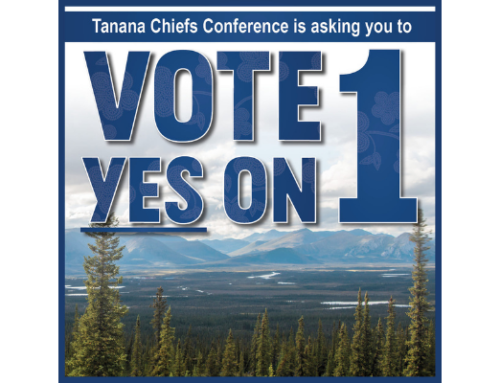Big Oil Talking Points Thoroughly Debunked by GAO Report and Academic Study
FOR IMMEDIATE RELEASE
October 27, 2020
Contact: Robin Brena at (907)258-2000 (office) or (907)223-1000(cell)
Alaska started going broke as soon as the oil companies were able to get Senate Bill 21 passed. The worst part of SB21 is the $8 per barrel or $1 billion per year it gives away in credits for oil that was already being produced. Ballot Measure 1 eliminates these credits for our three major fields and will result in lower taxes than they paid on average for the past four decades.
In their attempt to defeat Measure 1, oil companies are advancing fake studies. Alaskans should consider the real studies that support the real benefits of Measure 1. The Government Accountability Office has analyzed the impacts of increasing royalties on federal lands. In a 2017 report, the GAO analyzed a study by the Congressional Budget Office and a study by Enegis LLC. To quote the GAO, “Both studies suggested that a higher royalty rate could decrease production on federal lands by either a small amount or not all.” The GAO noted for fields with good margins “there would be no change in production levels.” The GAO concluded, “The studies we have reviewed for oil and gas estimate that raising the federal royalty could increase net federal revenue.”
These findings were consistent with the GAO’s interviews with officials from states that have raised royalties. The GAO noted, “Officials from Colorado and Texas said that they have raised their state royalty rates without a significant effect on production on state lands.”
The GAO’s findings are also consistent with the primary study underlying the oil companies’ fake study by American Action Forum. AAF is a political action group in D.C. funded by dark money. AAF did not do a real study; it simply relied upon a study by Brown, Maniloff, and Manning. Not surprisingly, the Brown study directly contradicts AAF’s approach and conclusions. Key findings in the Brown study follow:
- The Brown study found, “oil firm investment in the US responds inelastically to changes in state tax rates.” This means Measure 1 will not significantly impact investment decisions in Alaska.
- The Brown study found, “drilling is inelastic with respect to changes in severance taxes.” This means Measure 1 will not significantly impact drilling; and, even if there were some marginal impact, it will be more than offset by the additional revenue to the state.
- The Brown study found, “tax rates are not a major driver of firm location decisions.” This means Measure 1 will not cause oil companies to leave Alaska.
- The Brown study found, “increasing severance rates . . . may lead to increases in government revenue in the medium-run.” This means Measure 1’s benefits will extend out for several years.
- Brown found, “using state tax rate decreases to incentivize investment may lead to losses of state government revenue.” This means SB21, with its $8 per barrel incentive, should not have been passed in the first place.
AAF’s fake study also has fundamental methodological flaws. AAF assumed Measure 1 applies to all fields. Measure 1 only applies to our three major fields. AAF assumes all capital costs are impacted. Brown found a minor impact to drilling. AAF assumes operating costs are impacted. Brown found operating costs are not impacted. AAF does not do a net revenue study and simply ignores the additional $1.1 billion per year of revenue from Measure 1. Brown considers the net impact. AAF and its press release simply lack any credibility.
Measure 1 only applies to our three major fields, like the Prudhoe Bay Unit. Prudhoe Bay has operated for three decades with higher production taxes than Measure 1, no credits, and no harm to investment or drilling. It makes a profit when the price of oil is $25 per barrel. Every credible study suggests applying Measure 1 to Prudhoe Bay will result in a substantial net revenue for Alaska.
Measure 1 will keep $1.1 billion per year more of our oil wealth in Alaska, helping Alaskans. This is the economic equivalent of 13,750 new Alaskan jobs at $80,000 per year. This is more than twice as many jobs as the entire oil industry provides in Alaska. Measure 1 will do this through more fully funded PFDs, education, essential services, and capital projects. Prop 1 will also begin to responsibly address our state deficit.
Alaskans should look at the real studies, and Vote Yes for Ballot Measure 1.
For additional information contact Robin Brena at (907)258-2000 (office) or (907)223-1000(cell). For campaign related inquiries contact campaign manager David Dunsmore at (907)278-8000 (headquarters) or (907)830-4288 (cell).
###




